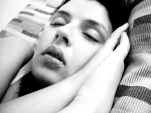 Danish sleep researchers at the University of Copenhagen and the Danish Institute for Health Services Research have examined the socio-economic consequences of the sleep disorder hypersomnia in one of the largest studies of its kind. The sleep disorder has far-reaching consequences for both the individual and society as a whole.
Danish sleep researchers at the University of Copenhagen and the Danish Institute for Health Services Research have examined the socio-economic consequences of the sleep disorder hypersomnia in one of the largest studies of its kind. The sleep disorder has far-reaching consequences for both the individual and society as a whole.
Hypersomnia is characterised by excessive tiredness during the day. Patients who suffer from the disorder are extremely sleepy and need to take a nap several times a day. This can occur both at work, during a meal, in the middle of a conversation, or behind the steering wheel.
Hypersomnia is often a symptom of sleep disorders such as narcolepsy, sleep apnoea, restless leg syndrome, violent snoring, and/or obesity-related breathing difficulties, explains Professor of Clinical Neurophysiology Poul Jennum from the Center for Healthy Aging at the University of Copenhagen. The professor also leads the Danish Center for Sleep Medicine at Glostrup Hospital, which each year treats patients from across the country.
Previous studies have indicated that these sleep disturbances affect people’s quality of life to a considerable degree both socially and economically. The current study shows that people who not only snore violently, but especially those who suffer from sleep apnoea, narcolepsy, and obesity-related breathing difficulties use the health services more frequently, take more medicine, and are more frequently unemployed. The more serious the sleep disorder the higher the socio-economic cost.
Each person who snores violently or suffers from narcolepsy or hypersomnia is calculated to cost Danish society an annual figure of 10,223 EUROs (approximately $13,555) and 2190 EUROs (approximately $2903), respectively. The figures refer to the direct cost of frequent doctor’s visits, hospital admissions, or medicine expenses and indirect costs in the form of lost working hours. In addition to this, costs are also incurred in the form of state benefits. The researchers demonstrated that hypersomnia patients received state benefits more often than healthy subjects and took state subsidised medicine more frequently. The study has highlighted the high costs that have arisen, especially those born by society and which is largely due to frequent absence from the work force and lower incomes among the sick.
“Our study is the first to show the actual socio-economic consequences of untreated hypersomnia,” explains Poul Jennum and refers to the fact that last year he and his colleagues carried out a similar study on the socio-economic consequences of the sleep disorder, narcolepsy. Here they also found an increase in the intake of medication, a higher rate of hospital admissions, and 30% more unemployment when the disease went undiagnosed and untreated. There is, however, significant potential for better diagnosis and treatment.
“We have gotten better in the last few years at diagnosing and treating hypersomnia and the underlying diseases,” explains Poul Jennum. This can be a help to patients because we know that there are a lot of people who go around incredibly tired during the day who do suffer from hypersomnia, but have never been diagnosed or discovered the reason for their tiredness. The question is whether their tiredness is owing to narcolepsy or is the fact that they sleep badly at night owing to some other reason?
It is clear to us that those who suffer from hypersomnia are more often ill and where hypersomnia is chronic, the economic costs to society can be quite considerable. That is why it is essential that people with the disorder have access to a system of treatment – otherwise the illness can affect their education, ability to work and thus their economic circumstances and health, says Jennum.
Facts about the Study:
The sleep scientists examined data from 2208 patients in total and a control group made up of 8832 healthy patients over seven years. Nearly all patients were over 30 years of age. The researchers demonstrated that one in 4 persons with hypersomnia needed hospital treatment over the period while the figure was 1 in 10 for the control group.
78% of patients with sleep disorders were taking some form of medicine over the period in comparison to 68% of patients in the control group and while 57% of hypersomnia patients took state subsided medicine, only 42% of the control group did.
35% of patients in the control group over the period were on some measure of state support, while 47% of hypersomnia patients received state support.
Material adapted from University of Copenhagen.
No comments yet.